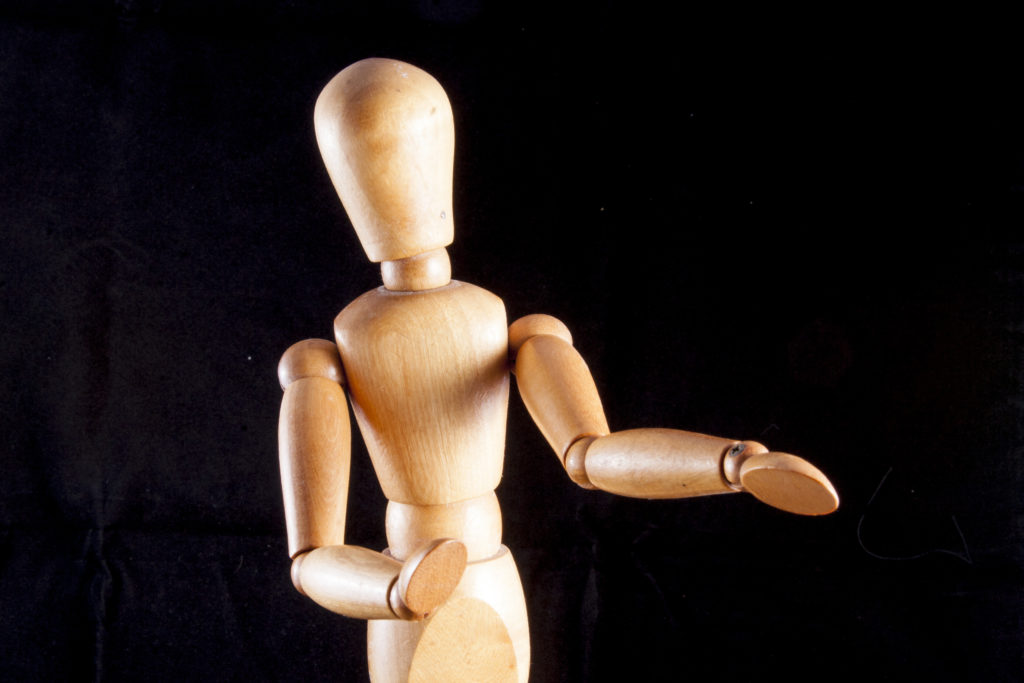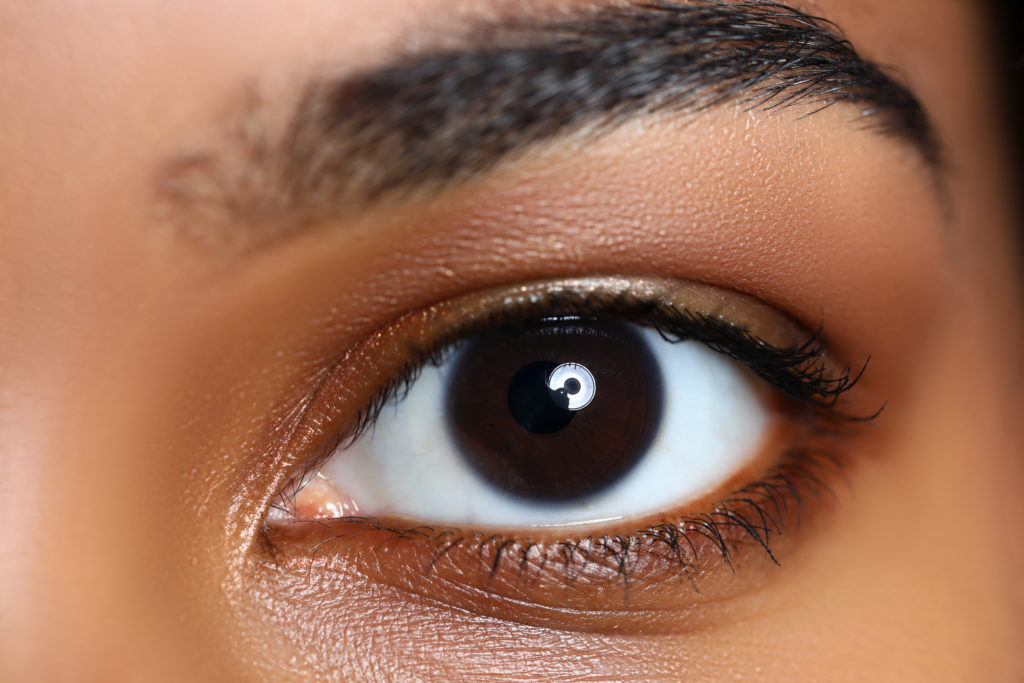
The words you use during your talk certainly matter, but the body language presentation cues that you project are as important – if not more so – in getting your message to land as you intended.
The gestures you use, the eye contact you make, the expressions you convey, and your very movement through a room offer a multitude of nonverbal signals to your audience.
It’s through these body language presentation cues that an audience will make assessments about your credibility, your expertise, and your passion for the subject, as well as whether you are qualified to seek followers for the cause you are advocating, to suggest the changes you are recommending, or to pitch the product you are selling.
Even something as seemingly small as the number of seconds you maintain eye contact with your audience or the decisions you make about what to do with your hands when presenting can make a difference. It boils down to the impression your words and your actions are making. And as researchers have discovered, first impressions are formed in mere seconds and are often quite accurate and long-lasting. In a well-known study led by the late Nalina Ambady, a professor of psychology at Boston’s Tufts University, students who watched two-second video clips (with the sound muted!) of a group of professors formed similar impressions to the ones drawn by students during a full semester.
So how do you exhibit the right body language for presentation success?
Effectively using body language in presentations takes skill and practice. But before we get into the tips and strategies for how to achieve the right look and tone, let’s look at the basics of body language in professional presentations, as well as why it is important to be aware of your body language while giving a presentation.
What is the Importance of Body Language in a Presentation?
 The physical manner in which you deliver your words can add further layers of meaning to your message and increase the chances your audience will retain and remember your key points. Conversely, it can distract from what it is you are trying to say. In that sense, if you project bad body language during a presentation, you can create a great deal of disconnect with your audience.
The physical manner in which you deliver your words can add further layers of meaning to your message and increase the chances your audience will retain and remember your key points. Conversely, it can distract from what it is you are trying to say. In that sense, if you project bad body language during a presentation, you can create a great deal of disconnect with your audience.
The proper body language in a presentation helps to convey that you have confidence in yourself and your message. A speaker who knows the importance of body language in an oral presentation can instill trust in the audience, which, among other things, helps to forge a connection. Further, a presenter who knows how to effectively employ body language presentation skills can help to emphasize the ideas that matter most.
If you are genuinely passionate about your subject, show it. A lackluster delivery not only belies your enthusiasm, but also does nothing to enhance the meaning and effectiveness of your words. What should your audience believe? The words you use to share how excited you are to be there, or the flat tone with which you delivered them? Typically, they’ll assume your monotone delivery is more indicative of your true feelings than your words.
Great physical communicators learn how to successfully align their facial expressions, gestures, movements, posture, and other nonverbal elements with their message.

Photo by Element5 Digital on Unsplash
Presentation Body Language Basics
If you were delivering sad news, would you do it with a smile, a bright voice, and a bounce in your step? Or would you deliver it with a serious expression, a somber tone, and less pep? Any incongruity between your actions and your message is going to make it difficult for your audience to process, understand, and retain your message. You want your audience to be concentrated on your message and not the misalignment between your nonverbal movements and verbal delivery.
Your physical presence reveals your mental and emotional state to your audience – and everything about that presence should project that you feel comfortable, are in control of the room, and know your stuff. When it comes down to how to use body language to improve your presentation, it’s a matter of focusing on several key areas of your physical movements, including your eye contact, your gestures during presentation, and your presentation posture. (You can learn more about vocal cues here.)
When we work with our clients during our public speaking training sessions, we focus on how even small adjustments can make a difference in their delivery – such as a subtle shift of the shoulders, a more open stance, increased eye contact with their audience, and more natural and authentic gestures.
All these adjustments in your body language in a presentation can help to encourage audience participation, provide greater emphasis to your words, help you to appear and feel more natural, and increase your connection with the audience.
Eye Contact in Presentations: Why It’s Important
 An unfocused, vacant look into the distance is not going to get you very far in your presentation, nor is an unrelenting stare aimed at one unlucky audience member. Eye contact presentation techniques require a more nuanced and targeted approach to be successful.
An unfocused, vacant look into the distance is not going to get you very far in your presentation, nor is an unrelenting stare aimed at one unlucky audience member. Eye contact presentation techniques require a more nuanced and targeted approach to be successful.
Given there is a large body of research that reveals just how influential eye contact is when it comes to the assumptions, judgments, and perceptions people make about one another, it’s important to give more than, shall we say, a passing glance to how you plan to move your eyes about the room.
Authors, researchers, seasoned speakers, consultants, and trainers vary slightly on the exact amount of time to maintain eye contact with someone in your audience. It appears that a few seconds is the going rate. Or, to translate that into words – a sentence or two. We tend to approach it differently. We’ve found most speakers naturally strike a reasonable balance of how long to maintain eye contact with one person before moving on. If they focus too much brainpower on counting the seconds or tracking their sentences, it can trip them up.
So, instead, here’s a simple rule:
When looking at your notes, your slides, or any other place than your audience, you should not be talking. Any time you are communicating information, you should be looking at an audience member.
And you don’t want to be looking at just one person all the time. It’s important to have effective eye contact in your presentation skills toolbox. In this post, we dive more deeply into effective ways to lock eyes with multiple members of your audience, depending on the type of presentation and venue.
How to Use Facial Expressions in a Presentation
Animated and dynamic speakers know they have a fuller palette of expression to help tell their story when they enlist the more than 40 muscles in their face to move their eyes, nose, brows, and mouth. It is through facial expression that we convey emotions, including seven universal emotions identified by psychologist Paul Ekman through his decades of work. Researchers have found that your audience is likely to make assumptions about you, such as how intelligent, trustworthy, or confident you are, based on your expressions.
Here are some tips on how to better communicate through facial expressions:
Smile. Unless the material requires a more serious expression, smiling while presenting tends to convey warmth and competence, which can help you to connect with your audience.
Be expressive. This is not a license to be a mime, but rather, to use your expressions to relay your enthusiasm, your excitement, and to reinforce and support your key points and ideas. Just as presenters are encouraged to expand their vocal range to avoid a monotone presentation, so too is it important to avoid a static expression throughout your entire talk.
Observe your audience. Do they look confused? Disinterested? Just as your audience picks up cues through your facial expressions, you too may be able to make perceptions about your audience. (Just be mindful that not every neutral expression indicates boredom or disinterest.)
Hone your talent. As with any language, using and practicing it leads to mastery. Nonverbal language is no different. As you practice and rehearse your talk, think about what your facial expressions are conveying and if they are effective. Do they align with your words? Do you appear natural and authentic? Do they support and reinforce your key ideas?

Correct Body Posture During a Presentation
It’s hard to think of a single situation where slouching would be advised – and a presentation is no exception. The correct presentation posture if you are standing is to …
- Square your shoulders with the audience
- Stand tall
- Relax your stance. You are not standing at attention!
- Face them directly instead of tilting your body away from them. (The exception to this rule is when you are soliciting feedback from your audience. In that case, turning your body at a slight angle can encourage engagement.)
The correct presentation posture if you are sitting is to …
- Lean forward slightly
- Plant your feet firmly on the floor (avoid crossing your legs)
- Avoid slouching into the chair
Beyond the confidence this posture projects to your audience, researchers have found when you throw those shoulders back or sit upright in your chair, that feeds into your self-confidence, too.
How to Improve Body Language for Presentations
The best way to project body language in a presentation is to be natural. And while it may sound counterintuitive, one of the ways you can appear and feel more natural in your movements is to practice them. This is why it’s important to save some time for rehearsals or practice runs.
Some of the best ways to test your material and your delivery are to record yourself, offer a practice run to an audience of colleagues or friends, and recreate the run-through so that it is as close to the live event as possible.
And, please, this is not the time for harsh criticism. Use this opportunity to see where you did well, such as projecting a confident smile, standing tall, and maintaining meaningful eye contact. Also, look for the areas where you can improve. Did you employ effective body language with your PowerPoint presentation slides? (Here’s are some specific ways to improve your PowerPoint presentation through body language and gestures.)
If you were on a panel, did it appear as if you were slouching? Did you appear nervous or ill at ease? (Here are some ways to counter your fear of public speaking. ) Use this time to hone your skills. Every presentation – whether practice or “live” – is a chance to improve.
Success occurs with preparation, and growth occurs with practice, whether you are a novice or seasoned pro. Here are some specific ways to make the most out of that preparation.
Practice in Front of a Mirror
 For years, it’s been common practice among public speaking trainers to suggest that presenters should hone their body language presentation skills by practicing their speech in front of a mirror. If it helps you to gauge where you need to adjust and where you shine, then go for it. At Throughline, we typically advise against it. Staring back at yourself tends to create a situation where the smallest missteps prompt a super-critical response. In turn, the bigger picture is often missed. Since most speakers are not inches from their audience, recording yourself by video is a much better strategy to gain a real-life gauge of how your audience sees you.
For years, it’s been common practice among public speaking trainers to suggest that presenters should hone their body language presentation skills by practicing their speech in front of a mirror. If it helps you to gauge where you need to adjust and where you shine, then go for it. At Throughline, we typically advise against it. Staring back at yourself tends to create a situation where the smallest missteps prompt a super-critical response. In turn, the bigger picture is often missed. Since most speakers are not inches from their audience, recording yourself by video is a much better strategy to gain a real-life gauge of how your audience sees you.
Record Yourself
There are several reasons that video recording a practice run-through – either with a camera or smartphone – will help your presentation run a whole lot smoother. In addition to tracking such things as your timing, your pace, and the overall flow of your presentation (For example, do you vary the time for each main point? Do you have a mix of message supports, including statistics, stories, and slides?), you also can analyze your body language. Here are some of the things you want to look and listen for:
- The pace, pitch, and tone of your voice and how effective those elements were in conveying your main points.
- How well you maintained eye contact with your “audience.”
- Your gestures and whether they add emphasis to your talk and reinforce key ideas.
- Any mannerisms that are creating distractions, such as pacing in a predictable pattern, fidgeting with your tie or jewelry, or constantly brushing your hair back.
Watch the tape, identify the two or three things you want to improve upon, and do another practice run. If you improve, add another element, and then do another practice run if you have the time.
Learn how to control your body language during a presentation!
Work with our experienced Throughline Group trainers to identify and use effective body language, including energy, gestures, and posture. Sign up today!
Rehearse in Front of Team Members
While a video recording can be an effective way to assess your presentation skills, rehearsing in front of an audience of colleagues is key to getting a feel for the “real” thing. It gives you a chance to assess the nonverbal communication of your audience in real-time, and make the body language presentation fixes that will help you to increase your chances that you are connecting with your audience and helping your messages stick. You can make these sessions more effective in several ways. They include:
Treating your practice like the real thing. Avoid caveats or skimming through sections (“When I really give my talk, I’ll tell a funny story here.”)
Asking for honest reactions. Your team may be rooting for you, but they need to react honestly if your words are falling flat, your energy is low, or you are spending too much time looking and reading from your notes.
Embracing slip-ups, technical difficulties, and distractions. You may be tempted to start over, but plow through any hiccups so you gain the confidence and experience in dealing with difficulties before your talk goes “live.”
(Here are 20 questions you can ask your practice audience.)

Additional Presentation Body Language Tips
Your facial expressions, your posture, and your eye contact are all important elements in your nonverbal delivery. But you have other body language presentation cues that you also can use to make your presentation more effective. Remember, your hands can do some “talking” and your feet can do some walking in the service of your speech.
Hand gestures during a presentation can be used to do many things, including:
- Adding emphasis to a word or point
- Pointing something out on a slide or other visual support
- Reinforcing a concept
In practice, this means you might hold your fingers up for each point you want to make (“No. 1 is this …”). Or, with an outstretched hand – palm open – you direct your audience’s attention to a point of data on your chart. Finally, if you are comparing two recommendations perhaps you pantomime a scale with your hands, indicating that one side should win out over the other.
As for movement, unless you must stay tethered to the lectern, make the most of your space. Movement is one way to keep your audience alert and its attention on you. This leads to a more dynamic presentation and better connection with the audience.
When done with intention and confidence, your gestures and your movement – really, your overall body language in a presentation – will help to solidify your credibility, reveal your control of your material and the room, and help you to emphasize your key points.
Here are some specific tips on how to incorporate these additional body language presentation techniques into your talk.
What To Do With Your Hands During a Presentation
You may have been told it’s best not to gesture when speaking, but in our work with clients we have found that speakers become less anxious, appear more natural, and remember and retrieve their words far more effectively when they gesture during their presentations.
And the research backs that up. Gesturing not only adds emphasis and verve to your words but also can help you to better remember what you want to say.
However, there is a difference between gesturing and fidgeting. For instance, when you hold out your hand with the palm facing up when calling on someone during your Q&A, it is an effective and open gesture. It encourages engagement and connection. But, if you are hands are in constant motion, such as clasping and unclasping your fingers, twirling the ring on your finger, picking at your nails, or touching your face or hair, then your gestures can become a distraction.
When gesturing, remember to:
Be authentic. Start with what comes naturally and work from there. Forced movement will be seen for what it is – forced.
Be purposeful. Trade fast, undisciplined hand movements during the presentation for gestures with intent.
Be open. Avoid gestures such as pointing at your audience, gesturing toward them with your palm down, or crossing your arms – all of which can have a negative connotation or make you appear “closed” off and inaccessible.
Be aware of cultural differences. Although certain presentation hand gestures and expressions fall under a universal language, gestures do not necessarily mean the same thing in every culture. For instance, your OK sign may mean just that, but to a person from another country, it might just be highly offensive. (Here’s a look at some of the more common nonverbal faux pas.)
What if My Hands Won’t Stop Shaking?
Anxiety has a way of hijacking whatever veneer of calm you, as a speaker, may have managed to induce before your talk. One of the ways your nervousness manifests itself is through your trembling hands. You may notice the shakiness as you organize your notes or take a sip of water. Most of the time, what you see as full-on earthquakes more typically come across as small-time tremors – if they are noticed at all by your audience. For most people, once the initial jitters ease, those tiny tremors fade. However, if that trembling never eases and you are wondering how to stop shaking hands during a presentation, it’s best to think beyond the symptoms and get to the core of the issue – anxiety. To do that, you must identify the cause of your fear – here are eight causes of public speaking fear – before you can find the techniques that will help you to reduce and manage it.

Photo by Martin Adams on Unsplash
Moving Around During a Presentation: Is That OK?
Movement is one way to keep your audience alert and its attention on you. Make the most of your space and your body language presentation skills so that you can create a more dynamic presentation and a better connection with your audience. What you don’t want to do is pace or create a predictable pattern in how you move around the room. That said, there are several ways you can utilize your space more effectively while walking during your presentation.
Here are several:
Use your movement to emphasize your points. You can begin on one side of the room and share your first, before moving to the other side for Point No. 2. Make your way to the center for your last point.
Approach your audience. When answering questions or seeking participation, walk toward your audience.
Avoid swaying. If you are standing still, try to avoid rocking from side to side. You can counter this by placing one foot about two to three inches in front of the other.
How You Dress is Important, Too
 Clothing is a way we communicate with the audience and ourselves. Studies have found that what you wear can influence other’s perceptions as well as what you think about yourself. Further, if you are comfortable in what you are wearing and believe you are projecting the self-image you intend, you are more confident and appear more confident.
Clothing is a way we communicate with the audience and ourselves. Studies have found that what you wear can influence other’s perceptions as well as what you think about yourself. Further, if you are comfortable in what you are wearing and believe you are projecting the self-image you intend, you are more confident and appear more confident.
Here are a few tips:
Choose the outfit that best supports your message, which means knowing the tone you want to set about your topic and who you are.
Purchase an iron or get your clothes pressed. You can certainly present in casual clothes, but wrinkles are a no-go in nearly any situation.
Consider your accessories carefully. Ostentatious jewelry or lapel pins will probably attract more attention than you want them to. They also could interfere with your microphone.
Be wary of fabrics that rustle or shoes that make noises when you move. Not only will that distract you, but your audience will notice it, too.
Sign Up for Public Speaking Skills Training in NYC!
Join our experienced Throughline Group trainers as they guide you on how to use your existing talents, along with the new skills and strategies that you will learn. Sign up today!